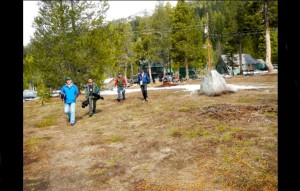Snowmelt impacts communities from Sierra to Pacific
By Lisa Krieger, San Jose Mercury News
When a single snowflake falls peacefully atop a Sierra peak, it begins a turbulent journey to help quench the thirst of a drought-stricken state.
In most years, Sierra snow provides a third of California’s water supply. But it is by far the least reliable portion — and now, after three years of historically low snowfall, tensions are soaring over how we share the shrinking bounty of this great frozen reservoir.
Today, on the cusp of a long, dry summer, we follow the melting snow — and meet its dependents — along one of its many routes from remote peaks to thriving communities around the Golden State.
As our snowmelt travels the 300-mile path from Yosemite’s Mount Dana to the sea, it meanders through the Tuolumne River watershed, past hydropower plants and nurseries, wildlife refuges and chemical plants, vineyards and the San Francisco Bay Area, where it provides water for millions of people.
Each of these water users, linked by a reliance on this fragile resource, has a legal right to some of the flow — and a growing need to insist on those claims.
The trouble is, in an average year, five times more water is committed than flows through all the state’s rivers and streams combined, according to new research by University of California scientists. The state’s population growth will further boost this demand. And climate change predictions suggest our water supply will only continue to diminish.



